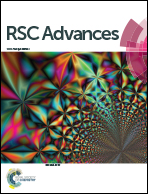Scaffolds drive meniscus tissue engineering
Abstract
Meniscus injury is a common sports injury. The removal of the injured meniscus predisposes the development of osteoarthritis. Tissue engineering provides a promising approach for the treatment of meniscus injury. Over the past few decades, researchers have put a lot of effort in developing various kinds of scaffolds for preventing osteoarthritis and relieving clinical symptoms. The scaffolds for meniscus tissue engineering (MTE) can be categorized into four classes: hydrogels, three-dimensional (3D) porous polymeric scaffolds, extracellular matrix (ECM) macromolecule-based 3D matrices, and tissue-derived platforms. Although the expected efficacies in tissue integration and chondro-protective function have not yet emerged, several scaffolds have been exploited to provide new substitutes for native meniscus, suggesting their great potential in promoting tissue engineered meniscus (TEM). In the current review, we provide and discuss evidences on different scaffolds in order to make recommendations for the further development of MTE.


 Please wait while we load your content...
Please wait while we load your content...